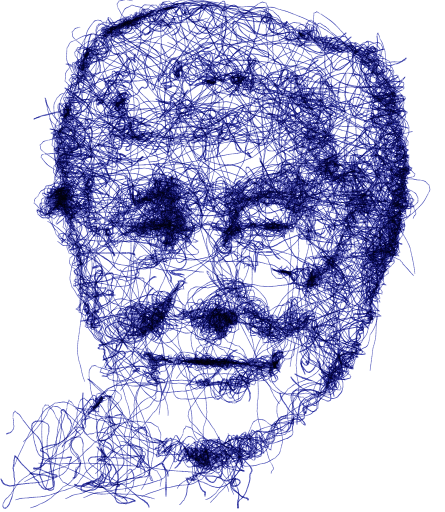Biography of Claude Parent, architect (1923-2016)

Claude Parent is one of the most important architects and theorists of the architectural revolution in the second half of the 20th century. He was the first in France to break away from the orthogonality of modernism and offer an alternative that proved fertile: the Oblique. With the theory of the Oblique Function, developed with Paul Virilio from 1963 to 1968, and a life spent implementing the idea of movement and obliqueness in his projects, he reinvented the way we experience public and private space. His research and experiments in dynamic architecture and urbanism advocate the use of slopes to give inhabitants an active role by connecting them to their built environment.
He designed several residential buildings, including the remarkable Avicenne Foundation (formerly the House of Iran) at the Cité Internationale Universitaire de Paris (1962, with André Bloc and Iranian architects Moshen Foroughi and Heydar Ghiaï). Many contemporary architects, including Jean Nouvel, Frank Gehry, Zaha Hadid, Wolf D. Prix, and Rem Koolhaas, have acknowledged the influence of his ideas and work. Winner of the Grand Prix National d’Architecture (1979) and a member of the Académie des Beaux-Arts, his work is included in museum collections both in France and abroad.
I like the city because it is a conflict. I like architecture because I am inside a conflict.
A poem-chair
“I adopted the chair, this familiar object, a few decades ago, at a time when I wanted to create art on a human scale in public spaces, while everywhere else people opted for the monumental: it is an object shaped like the body and serves the body. It is difficult to feel exclusive ownership of an object so universally shareable. It is mine when I occupy it, but if I leave it, someone else can claim it as their chair.” Michel Goulet, artist-sculptor
The project Prendre position
Prendre position is a sculpture-installation project of 47 chair-poems to mark the 100th anniversary of the Cité internationale universitaire de Paris. They were installed in a flowered meadow created especially for the occasion by the campus estate service.
This artistic installation was conceived by the Quebecois artist-sculptor Michel Goulet, in collaboration with François Massut, founding director of the collective Poésie is not dead.
Each house on the campus is represented by a chair, thanks to a donation from the Maison des étudiants canadiens and the support of the Labrenne group. Each of the 47 chairs is a unique work.
History and architecture of the house
The Avicenne Foundation, built in 1969 by Claude Parent and André Bloc, in collaboration with Iranian architects Hedar Ghiai and Mossem Foroughi, marked the end of the second construction phase of the Cité Internationale, following World War II. It was transferred to the Cité Internationale in 1972 and renamed the Avicenne Foundation, in honor of the great 11th-century Persian physician and philosopher.
